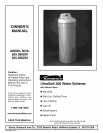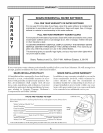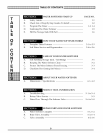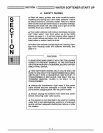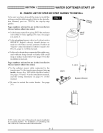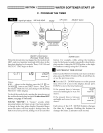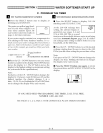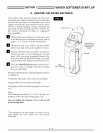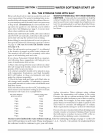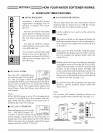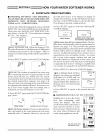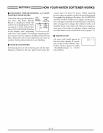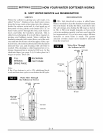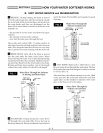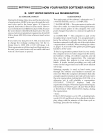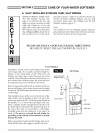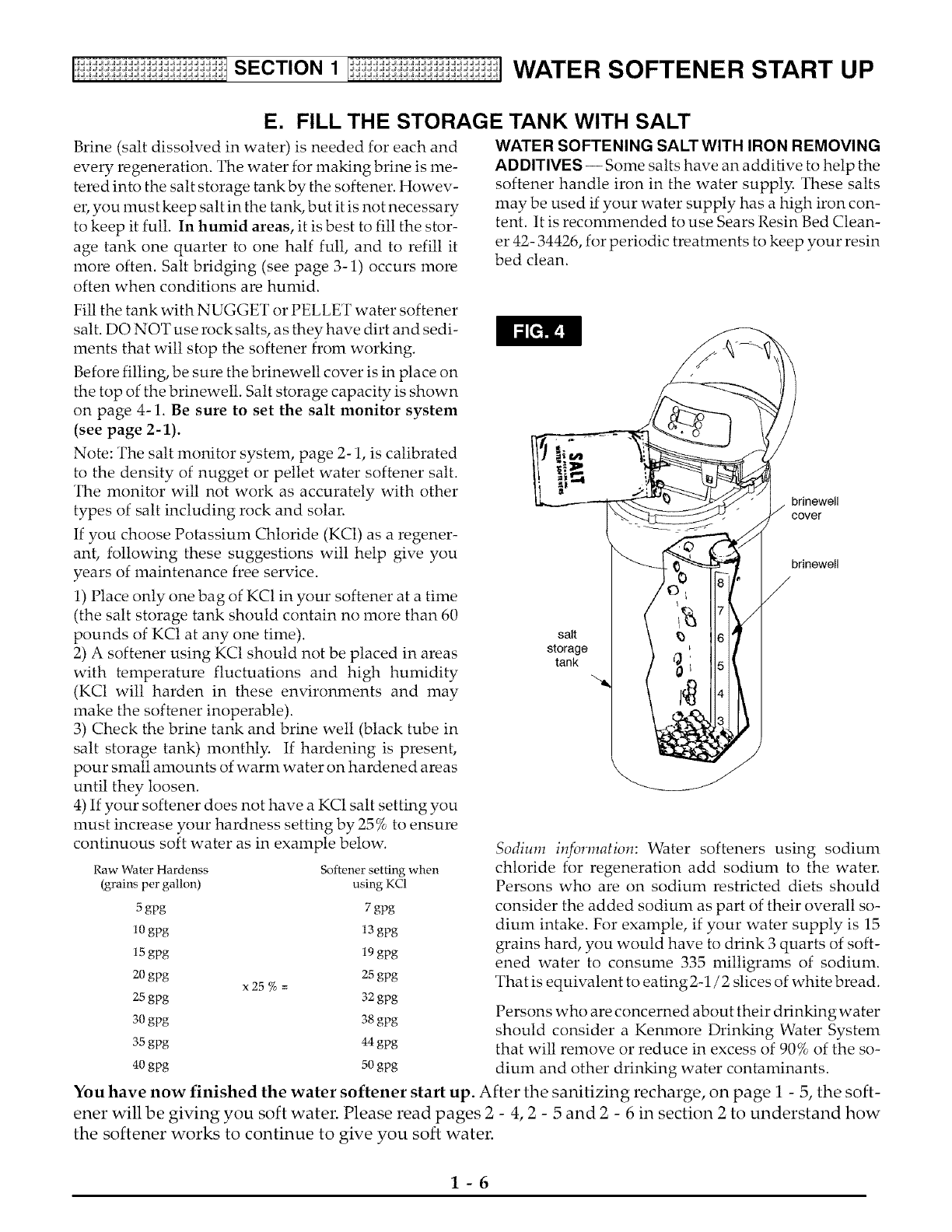
[i:ii:{i:ii:_i:i:ii:_i:i:ii:_i:i:ifSECTlON 1 l:{i:ii:_i:i:ii:_i:i:ii:_i:i:ii:_i:] WATER SOFTENER START UP
El
Brine (salt dissolved in water) is needed for each and
every regeneration. The water for nraking brine is nre-
tered into the salt storage tank by the softener. Howev-
el; you nrust keep salt in the tank, but it is not necessary
to keep it full. In humid areas, it is best to fill the stor-
age tank one quarter to one half full, and to refill it
nrore often. Salt bridging (see page 3-1) occurs nrore
often when conditions are hunrid.
FILL THE STORAGE TANK WITH SALT
WATER SOFTENING SALT WITH IRON REMOVING
ADDITIVES -- Sonre salts have an additive to help the
softener handle iron in the water supply. These salts
nray be used if your water supply has a high iron con-
tent. It is reconmrended to use Sears Resin Bed Clean-
er 42- 34426, for periodic treatnrents to keep your resin
bed clean.
Fill the tank with NUGGET or PELLET water softener
salt. DO NOT use rock salts, as they have dirt and sedi-
nrents that wilt stop the softener front working.
Before filling, be sure the brinewell cover is in place on
the top of the brinewett. Salt storage capacity is shown
on page 4-1. Be sure to set the salt monitor system
(see page 2-1).
Note: The salt nronitor system, page 2-1, is calibrated
to the density of nugget or pellet water softener salt.
The nronitor will not work as accurately with other
types of salt including rock and solar.
If you choose Potassiunr Chloride (KC1) as a regener-
ant, following these suggestions will help give you
years of nraintenance free service.
1) Place only one bag of KC1 in your softener at a tinre
(the salt storage tank should contain no nrore than 60
pounds of KC1 at any one tinre).
2) A softener using KC1 should not be placed in areas
with tenrperature fluctuations and high hunridity
(KC1 wilt harden in these environnrents and nray
nrake the softener inoperable).
3) Check the brine tank and brine well (black tube in
salt storage tank) nronthly. If hardening is present,
pour snralt anrounts of warnr water on hardened areas
until they loosen.
4) If your softener does not have a KC1 salt setting you
nrust increase your hardness setting by 25% to ensure
continuous soft water as in exanrple below.
Raw Water Hardenss
(grains per gallon)
Softener setting when
using KC1
5 gpg 7 gpg
10 gpg 13 gpg
15gpg 19 gpg
20 gpg 25 gpg
x 25 % =
25gpg 32gpg
30 gpg 38gpg
35gpg 44gpg
40 gpg 50 gpg
brinewell
cover
brinewell
salt
storage
tank
Sodium information: Water softeners using sodiunr
chloride for regeneration add sodiunr to the water.
Persons who are on sodiunr restricted diets should
consider the added sodiunr as part of their overall so-
diunr intake. For example, if your water supply is 15
grains hard, you would have to drink 3 quarts of soft-
ened water to consunre 335 nritligranrs of sodiunr.
That is equivalent to eating2-1/2 slices of white bread.
Persons who are concerned about their drinking water
should consider a Kennrore Drinking Water Systenr
that wilt renrove or reduce in excess of 90% of the so-
diunr and other drinking water contanrinants.
You have now finished the water softener start up. After the sanitizing recharge, on page i - 5, the soft-
ener will be giving you soft water. Please read pages 2 - 4, 2 - 5 and 2 - 6 in section 2 to understand how
the softener works to continue to give you soft water.
1-6



